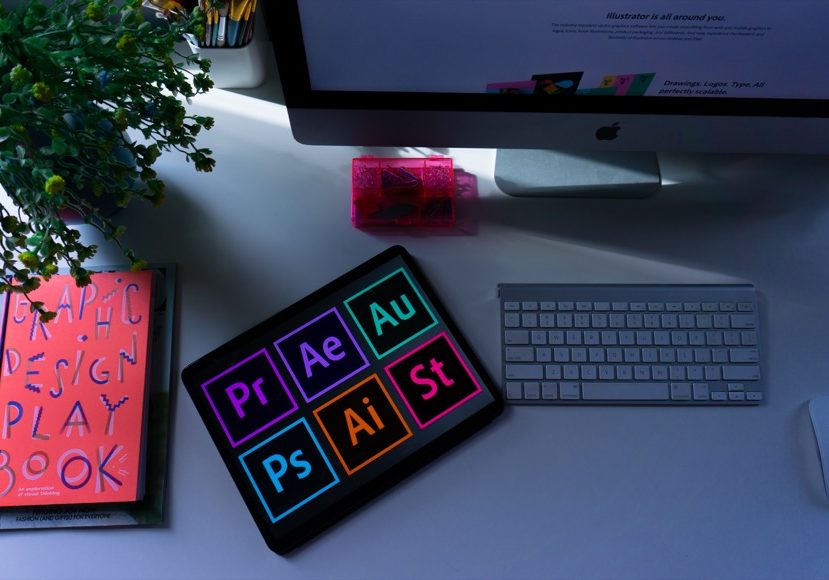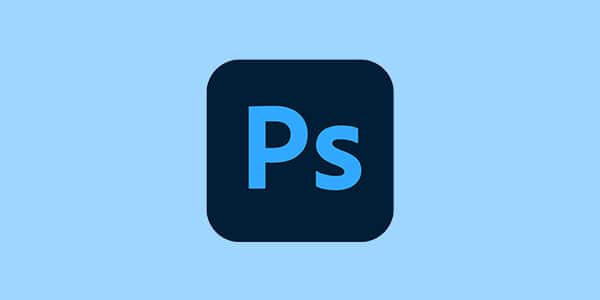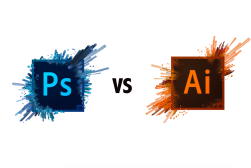
10 Best Graphic Design Software of 2023 (Free and Paid)
Choosing the right graphic design software is essential for your success as a photographer or designer. Here's a list of the top 10 free and paid programs.
Software | By Usnea Lebendig
Choosing the right graphic design software is essential for your success as a photographer or designer.
Whether for photo editing or traditional graphic design tasks, choosing the right program for your needs can be confusing.
The best graphic design software provides an intuitive user interface with image manipulation tools and advanced features to suit all skill levels.

Widest range of graphic design & image editing tools including new AI-powered options, multi-device support and cloud backups make Photoshop an industry standard.
While the Adobe Creative Cloud apps still dominate, there’s also a selection of free graphic design software for those on a tight budget, and various paid options that don’t require a monthly subscription too.
Let’s take a closer look at the top programs of the year so you can select the best one for your Mac or PC.
Table of Contents
What is the Best Graphic Design Software in 2023?
Adobe Photoshop

- Top-of-the-line raster design tools
- Offers you full control of every pixel
- Lots of documentation, tutorials and user forums
- Synched libraries and cloud documents
- AI-powered options
- Continually updated
- Nearly limitless skill ceiling
- Integrated stock photo library
- Industry standard
- Can be a high learning curve
- Only available by subscription
Despite not being able to buy it outright, Adobe Photoshop is the best graphic design software, period.
Created in 1988, Adobe Photoshop has long been the industry standard for raster image editing and creation.
If your graphic designs have pixels, Photoshop will give you more control over how they look than any other program on the market.
While it’s best known for its fantastic photo editing capabilities, Photoshop also excels in working with any form of rasterized images, from digital art to web graphics, 3D editing, and even animation.
As far as its tool set is concerned Photoshop has more tools than you will ever use in your lifetime. Its drawing tools are fantastic, you can create any kind of custom brush you can imagine, and its selection tools are literally unmatched.
There are plenty of custom plugins and actions available – both free and paid, and you can even take your work on the go with Photoshop for iPad.
While Photoshop is also the best when it comes to manual control of an image – whether it be of pixels, color, warping, or creating fine selections – Adobe has also recently broadened out its AI capacities.
Now Photoshop has some fantastic AI-powered neural filters, sky replacement, subject selection, and automatic background removal.
Other key features include full integration with the Adobe Creative Cloud ecosystem, an integrated stock photo library, and free updates. (Or rather, all updates are included in the price of subscription.)
While Photoshop is indeed a raster image program, you can open and edit vector files by turning them into either a smart object or a rasterized file.
The only real downsides to Adobe Photoshop are its potentially steep learning curve and that the fact that it’s only offered on a subscription.
Of course, if you’re a working graphic designer (or plan to become one) you’ll be hard put to it to avoid a Creative Cloud subscription as it gives you access to the holy trinity of graphic design: Photoshop, Illustrator, and InDesign.
If you’re looking to avoid a subscription and/or want to make a one-time payment, keep scrolling as we’ve included a number of those graphic design software in our list too.
Canva

- Fantastically easy to use
- Templates are optimized for social media
- No need to install software
- Lots of instructional videos and tutorials
- Plenty of built-in templates, graphics, and fonts
- Drag-and-drop editor
- Export in high-res PDF, JPG or PNG formats with or without crop marks
- Limited free graphics and templates
- Not great for large design projects
- You must be online to use it
- You cannot save images in high quality
Our top pick for the best free graphic design software – at least for beginners – is Canva.
Canva has a fantastically user-friendly interface. Its drag-and-drop interface combined with its plethora of ready-to-go templates, images, and fonts makes it easy for just about anyone to create excellent web graphics in a record amount of time.
Canva’s many templates are built with the unique size requirements of just about every social media platform in mind.
Need a banner for Facebook? Easy! Need to add to your Instagram story? You could have it done in a matter of minutes!
The free version of Canva comes with plenty of helpful tools, but if you want any of the more advanced graphic design tools you’ll need to upgrade to the Pro version.
Of course, if you use the templates you can rest assured that many other people are as well. For something unique, you’ll need to make your own template or graduate to a more advanced graphic design software – see our comparison of Photoshop vs Canva.
But if you’re just starting out and are looking for free graphic design software that’s easy to use, super quick, and provides plenty of graphic design tools, Canva is an ideal place to start!
Adobe Illustrator

- Offers the best vector design tools on the market
- Extremely versatile drawing tools
- Easy-to-use free transform tool
- Highly customizable user interface
- Lots of excellent export options for print
- Desktop and mobile versions available
- Integrated stock photo library
- Steep learning curve
- Only available by subscription
- Has fewer templates than programs like Canva
If your graphic design includes vector images, Adobe Illustrator is the industry standard for pro-level vector-editing software.
Part of the Adobe graphic design software holy trinity (along with Photoshop and InDesign), Adobe Illustrator offers the most powerful range of vector tools of any graphic design software on the market.
With Illustrator, you can create everything from logos and sketches to vector illustrations and icons, all without compromising your creative freedom.
As far as graphic design software tools are concerned, there are more layers, brushes, filters, and other advanced design elements than you will likely ever need. There are also several targeted workspace layouts for different types of design (i.e., automation, web design, proofing, etc.).
Some of the new features include cut-and-copy Artboards, smart glyph snapping, in-app learning and support, new alignment tools, and new grid/radial/mirror repeat tools.
Like Photoshop, Illustrator has a bit of a steep learning curve, but it’s more than worth it if you want to do pro-level vector design.
Also, once you get used to it you’ll find that Illustrator has a very user-friendly and intuitive user interface with plenty of hotkeys, shortcuts, and customizability.
The only real drawback is that you’ll need to subscribe to Adobe’s Creative Cloud – either for Illustrator alone or for the entire suite.
If you’re a professional designer – or looking to become one – then you’ll probably find the full suite (which includes Photoshop, InDesign, and many other top-of-the-line apps) more than worth your while.
If you’re on a budget, though, Affinity Design (or any of the other Adobe Illustrator alternatives in this list) might work better for you.
Adobe InDesign

- Powerful tools for handling large amounts of text
- Exceptional pre-printing controls
- Precise image manipulation and placement
- Huge selection of fonts
- Well-integrated with both Photoshop and Illustrator
- Desktop and mobile versions available
- Exports into many different file formats
- Fully customizable workspaces
- Steep learning curve
- Only available by subscription
- Many shortcuts not the same as other Adobe software
A must-have for any designer who works in print, Adobe InDesign rounds out the holy trinity of Adobe professional graphic design programs.
While Illustrator is better for creating vector illustrations and Photoshop is unbeatable at photo editing, InDesign excels at creating text-heavy, multiple-page layouts perfect for any kind of publication, whether online or in print.
Key features include master pages, raster, and vector compatibility, a huge range of typesetting options, and export options that cover the gamut of print, web, and eReaders.
INDD files seamlessly integrate images, graphics, and text for a perfect print or digital output.
Like the other Adobe graphic design software options, you’ll need to subscribe to the Creative Cloud in order to use it – something that’s cost-prohibitive for many (especially if you need the full Creative Cloud suite).
But if you’re a working designer, you won’t find anything better when it comes to graphic design software for large-project page layouts.
Affinity Designer

- Fast and full-featured
- Works with both pixels and vector design
- Compatible with Illustrator files
- Reasonable price
- No subscription required
- Works on multiple operating systems (Mac, Windows, iOS, etc.)
- Lacks some advanced features
- Document compatibility isn’t always perfect
Affinity Designer is a low-cost, pro-level vector-image design program that packs a punch. Its parent company, Serif, calls it a “stripped back, pro-end workhorse that will always get the job done.”
And get the job done, it will.
While it doesn’t quite have all the features of its more powerful cousin, Adobe Illustrator, Affinity Designer performs faster than Illustrator and comes with the ability to toggle between vector design and pixel image editing.
The pixel image editor isn’t as robust as the vector side of things, but it’s there if you need it and can save you a lot of time if you frequently work in both image types.
Affinity Designer also has the ability to work almost seamlessly with Illustrator AI and Photoshop PSD files, allowing you to easily collaborate with colleagues or clients who work with those programs.
Other key features include a fantastic contour tool, incredible zoom, unlimited artboards, a saveable history with alternate futures, customizable keyboard shortcuts, continuous slice export, and the ability to export in multiple file formats.
The best part?
You can buy it for a one-time fee of less than $60! No subscription, and all of the updates included!
Adobe Creative Cloud is still the best of the best in terms of features, shortcuts, and tools, but to get this level of functionality at such an astounding value is downright tempting, even for those not on a budget.
If you’re needing the equivalent of Adobe’s “holy trinity” of graphic design software, you can round things out with Affinity Photo and Affinity Publisher as well – both of which are equally as affordable.
Either way, Affinity Design is definitely the best graphic design software for vector images offered at this price.
Available for Windows, Mac, and iOS
Sketch

- Low learning curve
- Intuitive interface
- Fantastic for UI and icon design
- 30-day free trial
- Available only by subscription
- Mac-only
- Not useful for print designs, illustrations, or photo editing
Looking for the best graphic design software for UI design, icon creation, and/or prototyping?
Sketch is a Mac-only vector-based program that specializes in everything related to UI design.
Sketch doesn’t have the depth of features that Adobe Illustrator or Affinity Designer can offer, but it’s become the go-to program for many in the app design world.
The UI is basic but intuitive, and it comes with all the advantages you’d expect from a native-Mac app, like native font rendering, support for P3 color profiles, and light speed performance on Apple Silicon.
Key features include in-app real-time collaboration, the ability to test your prototypes on your own devices as well as share them via a link with others, and streamlined developer hand-off.
If you need print work or photo editing…or if you don’t use a Mac…it would be best to look elsewhere.
Otherwise Sketch is definitely the best graphic design software for UI and icon creation.
Unfortunately, it’s is only available by subscription (starting at $9/month). Still, if designing the UI for apps and web pages is your thing, it’s more than affordable.
Inkscape

- Open source
- Advanced vector editing features
- Supports a wide range of design formats
- Fast and responsive
- Regular updates
- Runs well on even older PCs
- Customizable UI
- Completely free
- Steep learning curve
- The Mac version is a bit buggy
- Outdated UI
- No CMYK output
- Doesn’t support high-resolution Retina displays
If you’re looking for free vector software and/or are a Linux user, Inkscape is well worth a look.
Inkscape is a full-featured vector-based graphic design program that’s free and open source.
Some of the main features include a number of excellent pen tools, a variety of filters, and automatic bitmap tracing tools, and support for a wide range of file formats (including SVG, PSD and AI).
Unlike its Adobe counterparts, Inkscape is fast and responsive (even on weaker computers) – it’s been optimized to run on minimal requirements.
Just about everything on Inkscape is customizable (including the code, if you’re a programmer).
It’s not only easy to create custom brushes, overlays, and textures and share them with others, but Inkscape’s plugin architecture is wide open, allowing you to extend your toolkit with ease.
If you’re used to professional-level programs like the Adobe Creative Suite, you’ll probably be annoyed by the interface.
It’s a bit outdated, counter-intuitive to Adobe users, and has a high learning curve.
That being said, Inkscape boasts a passionate, cross-platform community with very active and helpful forums. If you need help, you won’t have far to look.
Inkscape operates on Windows, Mac, and Linux, but the Mac version leaves much to be desired, especially since it doesn’t support high-resolution Retina displays.
Still, if you’re coming to vector design from a fresh perspective (and a Windows or Linux OS), you’ll be pleasantly surprised at just how powerful Inkscape is.
Definitely one of the best free graphic design programs if you’re a beginner or hobbyist.
CorelDRAW Graphics

- Excellent pro-level tool set
- Easy to learn
- Unique features
- Available for a one-time fee
- Comes packed with digital images, stock photos, and fonts
- Robust community of users
- No subscription necessary
- Free trial
- Many tools don’t have shortcuts
- Lots of templates
CorelDraw is a powerful, full-featured graphic design program capable of delivering the goods on just about any vector design you wish to create.
Once the purview of Windows users only, CorelDraw now has an excellent Mac version, as well as a number of new features.
Its graphics suite includes pro-level software for vector illustration and page layout, font management, photo editing, and pixel-based image editing. There’s even a mobile version.
Experienced designers will love the Live Sketch Tool, and 3D digital artists will love the new Draw in Perspective feature.
There’s also a new multi-page viewer, a feature that is absolutely necessary for those needing to do larger print projects.
If you don’t already have your own library of assets, you’ll be pleased to find that CorelDRAW comes with over 10,000 digital images, 2,000 photos and 1,000 fonts for use in your designs.
If you’re not coming from the world of Adobe Illustrator, you’ll likely find the user interface more pleasant to work with than Illustrator.
If you’re used to Adobe software though, you’ll probably find the lack of keyboard shortcuts irritating.
For those with clients who are already using Illustrator, CorelDRAW import and exports AI and PDF files with ease, so going back and forth shouldn’t pose much of a problem.
While the subscription plan is admittedly quite pricey ($269/year), buying the CorelDRAW graphics suite straight out is quite the deal! For $549 you get all five Corel design apps in perpetuity.
If that’s beyond your budget, you can scale down to the “Standard” package, which includes just CorelDRAW and CorelPAINT for a one-time purchase of just $299.
LUNACY – Free Graphic Design Software

-
Free to use
-
Online and offline mode
-
Fast and smooth work
-
Available for macOS, Windows and Linux
-
No built-in templates
-
Limited free graphics
Lunacy is a free graphic design software which is available for macOS, Windows and Linux. It’s made for artists who work with vector art, UI/UX design, photo editing and more.
Lunacy can both help to create vector graphics and edit photos. It has a library of built-in graphics, including illustrations, photos and icons, which can be used to create user interfaces. Lunacy also offers AI-powered tools which work with photo editing.
You can remove the image’s background, enhance the quality of your images or create user avatars with them. It also has a ready-to-use UI kit optimized for different operating systems and devices to save your time.
Lunacy is the best alternative to Sketch on Windows with graphic resources integrated right into the app. Offline working mode and simple interface make it even easier for creating compelling designs on the go.
The interface of the app is available in 21 languages to give access to software to as many people as possible.
To sum up, Lunacy is a great fit for beginner designers since it gives an opportunity to work with professional tools from Sketch or Figma completely for free for everyone.
GIMP

- Open source
- Many of the same features as Photoshop
- Strong community
- Free
- Nonintuitive user interface
- Not updated as often as other programs
Rounding out our best graphic design software list is GIMP – free image editing software chocked full of incredible Photoshop features.
Short for Gnu image manipulation program, GIMP is the Linux standard for raster image editing. It can do much of what Photoshop can do, all for a much more reasonable price.
It comes with all the advanced photo retouching and selection tools you’d come to expect from a top-notch raster editor. It also has the ability to work (in a limited fashion) with vector images, and even allows the use of plugins.
While it has a much less intuitive user interface than Photoshop, GIMP’s interface is extremely customizable. This, combined with all of the third-party plugins available, makes GIMP a powerful option for those looking for free software.
It does take some getting used to, however, and Photoshop users will likely find the transition unworkable.
Still, many will find that it more than suits their image design needs, and since GIMP is free graphics software, you won’t be able to beat the price.
Graphic Design Software FAQs
What software do most graphic designers use?
Most graphic designers use Adobe software for their graphic design. This includes Adobe Photoshop (for raster images), Adobe Illustrator (for vector graphics), and Adobe InDesign (for desktop publishing). These have long been the industry standards.
Which software is best for graphic design for beginners?
Canva is the best graphic design software for absolute beginners – especially if you’re creating designs for web design or social media.
Which is better: Photoshop or Illustrator
Both programs are excellent for graphic design, but there are some key differences. Photoshop excels at raster image creation and editing. Illustrator is used for creating vector graphics.
How much RAM do graphic designers need?
The amount of RAM a graphic designer needs depends on the software they’re using. The minimum for Adobe Photoshop and Adobe Illustrator is 8 GB (with 16 GB recommended). The minimum for Adobe InDesign and Affinity Design is 4 GB.
Should I learn Photoshop first or Illustrator?
While it’s generally easier to learn Photoshop before Illustrator, which you chose to learn first really depends on the type of graphic design you’re doing. If your design work is primarily vector illustration, Illustrator will be better to learn first. If most of your graphic design focuses around raster images and editing, then definitely learn Photoshop first.
Final Words
Whether you’re looking to design web pages, create layouts for mobile apps, fashion unique logos, or put together a magazine, you’re going to need graphic design software that fits well with your workflow and style.
Chances are, as you develop and grow in your skill set, your software needs might change.
For beginners, Canva is a great starting point. It makes creating web graphics fun and easy.
Advanced users will probably find Adobe Photoshop and Adobe Illustrator to be their tools of choice, especially since they’re the industry standards.
That being said, there are plenty of options in between, both free and paid. If you’re undecided, make sure to take advantage of the free trials.
There’s nothing like taking a program on a test run before investing time, energy, and/or money into it.
Have any questions? Let us know!

Widest range of graphic design & image editing tools including new AI-powered options, multi-device support and cloud backups make Photoshop an industry standard.














